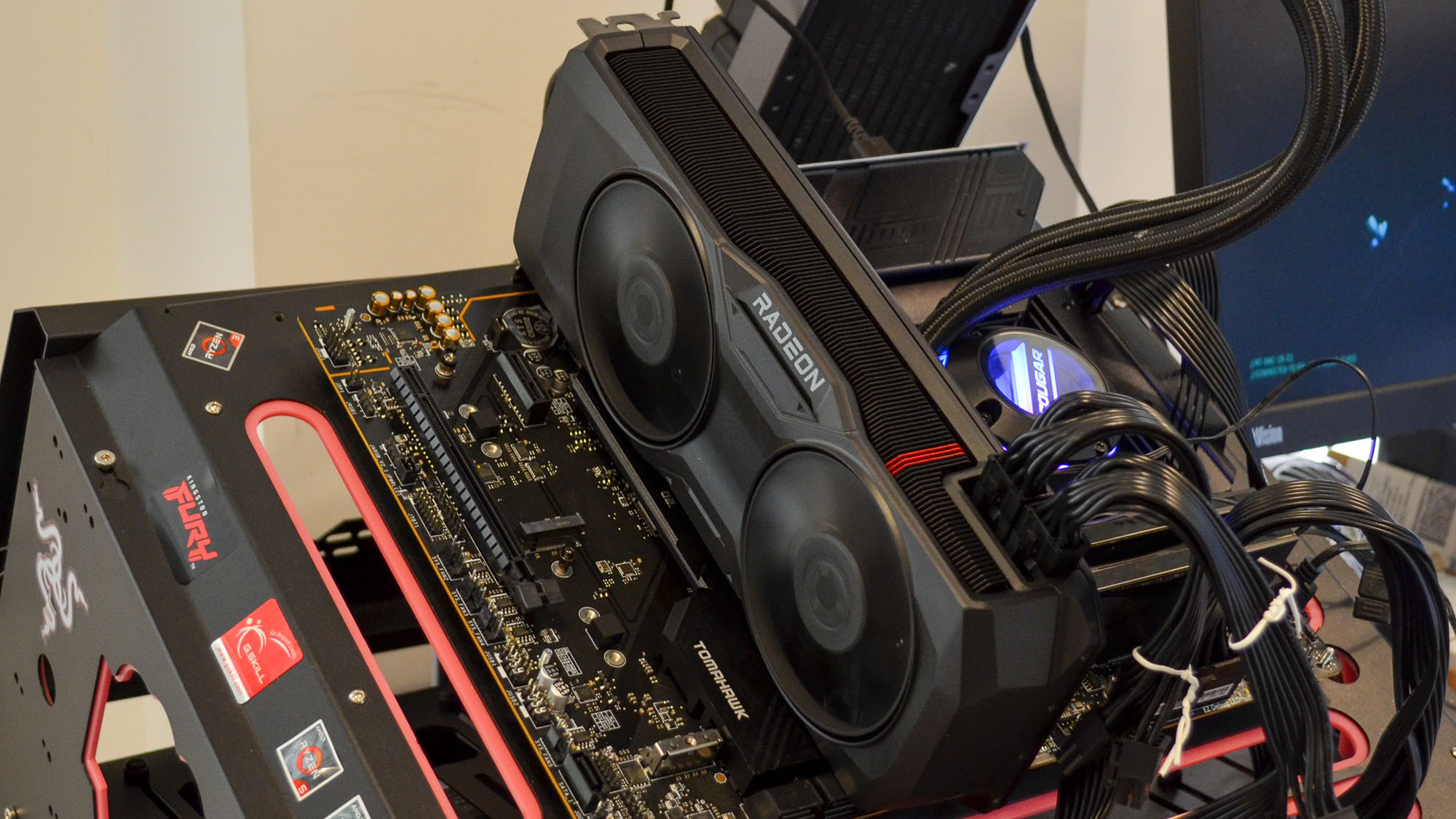AMD’s new graphics driver offers a free frame rate boost for all PC games – with a couple of notable catches
All DX11 and DX12 games are catered for – but some won’t work as well as others

AMD has released a new GPU driver, Adrenalin version 24.1.1, which brings in its Fluid Motion Frame technology to boost frame rates.
AMD’s Fluid Motion Frame (AFMF) feature is driver-level frame generation, or to put it another way, it’s a bit like FSR 3 (which contains AFMF, plus a lot more), but it works for all DX11 and DX12 PC games with no exceptions (whereas FSR 3 has to be supported by a game to work).
Obviously, you’re not getting the same experience as FSR 3 provides, and there are compromises with the quality here as you’d expect, but it’s still a cool feature that boosts fps (frames per second) for those with RX 6000 and RX 7000 graphics cards. (Sadly RX 5000 GPUs, or older generations, aren’t supported – neither are Nvidia GPUs as this is a driver feature).
Frame generation is a very literal term in that with this feature, extra frames are produced and inserted into the running game, upping the fps count and giving an (artificially) smoother gameplay experience (in theory, but with some catches, which we’ll come back to).
AFMF was previously in testing with AMD’s preview graphics drivers, but this marks its official release in a finished Adrenalin driver. As well as AFMF, AMD’s Adrenalin 24.1.1 driver also delivers support for a couple of new games: Tekken 8 and Like A Dragon: Infinite Wealth (the latest in the renamed Yakuza franchise).
Plus the other big move here is support for the latest in AMD’s armory of RDNA 3 graphics cards, the RX 7600 XT which doubles up the VRAM compared to its vanilla sibling the RX 7600.
Analysis: Thinking outside the frame
It’s great to have a driver-level take on frame generation, of course, as for games that don’t support FSR 3, you can get a nice boost. In fact, AMD reckons that frame rates can be almost doubled in a best-case scenario (citing, for example, an up to 97% boost at 1080p, though that’s with FSR 2 in quality mode in combination with AFMF).
Sign up for breaking news, reviews, opinion, top tech deals, and more.
However, as we mentioned there are caveats here, including that only RX 6000 and 7000 GPUs are invited to the party (and 700M series GPUs for laptops – and indeed portables like the Asus ROG Ally). The other major catch is that as AMD observes in the release notes: “AFMF preserves image quality by dynamically disabling frame generation during fast visual motion.”
In other words, when in fast-moving scenes, the feature will be automatically turned off, as visual artifacts and other nasties might pop up, and AMD doesn’t want that to ruin the experience.
Also, AMD notes that AFMF “may introduce additional latency to games and may not offer the optimal experience for fast-paced competitive titles,” like shooters as the obvious example. It’s recommended that you have Radeon Anti-Lag running to mitigate that input latency. Ideally, you should also be running at a decently smooth frame rate in the first place, pre-AFMF, for these kinds of games (60 fps minimum).
The argument from detractors is then that certainly for some games, AFMF isn’t all that great, and as you already need to have a smooth frame rate, the boosting is less useful anyway (and also that it doesn’t happen in certain scenarios, anyway).
That said, AFMF is clearly better than nothing, and will work well in some games, it’s just that there may be cases where its performance goes wonky. Indeed, even if you globally enable AFMF, AMD explains that certain fast-paced shooters and similar genres – those more prone to potential issues – will still have it turned off, and you’ll need to manually switch on AFMF in per-game settings. The message here is that if you do so, be prepared for potentially janky results, particularly if the game is running at a lower fps on your rig (before AFMF is applied, that is).
It’s possible that further fine-tuning may improve the way AFMF interacts with fast-paced games featuring lots of quick, snap movements, and we shall see down the line. But for now, this is still an impressive tool for speeding up fps in a good many games – across the board (well, for DX11/12) – even if it does work best for titles where you already have a somewhat smooth frame rate.
Via VideoCardz
You might also like
Darren is a freelancer writing news and features for TechRadar (and occasionally T3) across a broad range of computing topics including CPUs, GPUs, various other hardware, VPNs, antivirus and more. He has written about tech for the best part of three decades, and writes books in his spare time (his debut novel - 'I Know What You Did Last Supper' - was published by Hachette UK in 2013).